Dotmpotter - Dot Potter
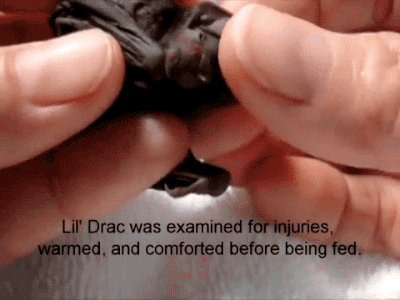

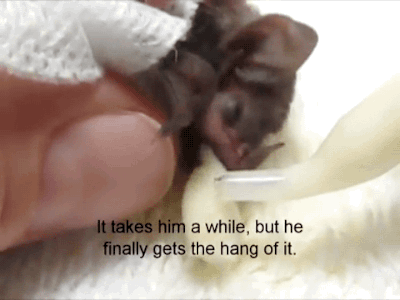
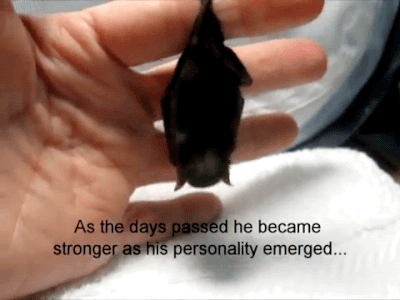
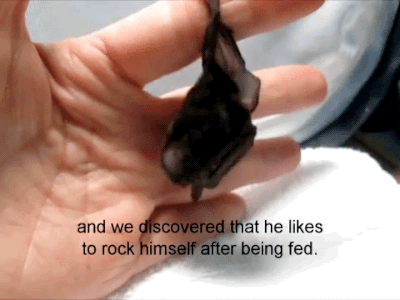

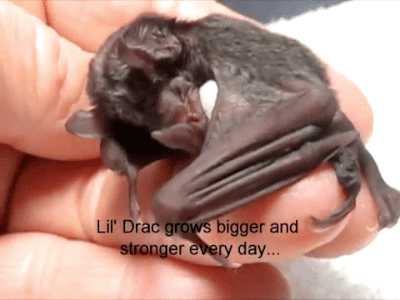

More Posts from Dotmpotter and Others

A Merry-Go-Round That Turns The Power Of Play Into Electricity - Vlad Vilenski posted in Green, Electricity and Non Profit
Empower Playgrounds is a nonprofit that has come up with an intriguing solution: Harnessing the power of play, it provides merry-go-rounds to schools in Ghana that generate and store electricity as they are spun around, even while teeming with laughing and smiling kids.
Continue to fastcodesign.com
On a fossil-hunting trip with her family, five-year-old Daisy Morris found the remains of a previously undiscovered dinosaur, which is now named Vertidraco daisymorrisae. The new dino is not only a previously unknown species, but an unknown genus, making Daisy’s find a really big deal. It’s a pterosaur — a winged flying dino — about the size of a crow, which lived 115 million years ago.



Wanted: Shredder for five million tires dumped in Spain
Spanish authorities are struggling to dispose of five million tires dumped on a site close to a housing development north of Toledo. The 90,000 tons’ worth of tires have been dumped there since 2002.
Environmentalists say that should a fire break out, it could not be extinguished with water and would have to be smothered with earth. In the event of a fire, Madrid’s main airport would likely have to be shut down and an estimated 11,000 homes evacuated. | Read more

Surf Girls And Waves http://bit.ly/1bNWtfB

Now a new filtering device, invented by a US teenager, could provide a cheap and easy way to purify water.
The renewable heavy metal filter, designed by 18-year-old Perry Alagappan, removes 99% of heavy metals from water that passes through it. The filter, built from graphene nanotubes, can be rinsed with a vinegar concentrate and reused. The highly concentrated waste can then be evaporated, leaving a deposit of pure metal that can be used in many different applications.
Alagappan, who was awarded the Stockholm Junior Water Prize at this year’sWorld Water Week, said the filter cost just $20 (£13) to make, up to five times less than existing reverse osmosis technology.
“I became interested in water purification when I visited my grandparents in India, and saw with my own eyes how electronic waste severely contaminated the environment,” said the recent high school graduate from Houston, Texas, on winning the prize.

FBI chief: It’s ‘unacceptable’ that Guardian has better data on police violence | See full article
The head of the FBI has said it is “ridiculous [and] embarrassing” that the federal government has no better information on police shootings than databases compiled by the Guardian US and the Washington Post.
“It is unacceptable that the Washington Post and the Guardian newspaper from the UK are becoming the lead source of information about violent encounters between [US] police and civilians,” said James Comey, the FBI director.
To see our updated count of police killings in the United States in 2015, visit the Counted database. You can also follow the project on Facebook and Twitter.
Our count as of this afternoon:


“A bus map you often see is the same thickness and same color line for the whole network: It makes [agencies] look like they’ve got the whole place covered,” says Wiggins. “That’s to the benefit of them and not to the rider.”
Wiggins thinks transit maps designed around coverage ultimately harm the system as a whole. Instead of using the map to find a bus route that works for a particular trip, riders stick to one specific line whose schedule they know—avoiding the map altogether. The result is a ridership that ends up taking a car more than it otherwise might, and one that objects loudly when the agency proposes a system change that would force them to learn a new route.
“I think with a better map, it actually might facilitate people being able to let go a little bit,” he says. “It stops becoming ‘this is my route and this is what I cling to’ and more of a network you can relate to.”
How San Francisco Got Its New Rider-Friendly Transit Map

From Hawaii’s flurry of hurricanes, to record high sea ice in Antarctica, and a heat wave that cooked the Australian Open like shrimp on a barbie, 2014 saw some wild weather. How much of that was tied to climate change is what scientists around the world tried to answer in the Bulletin of the American Meteorological Society’s annual attribution report, which was published Thursday.
What they discovered was that the clearest impacts of warming could be found in heat-related events, from heat waves on land to unusually hot ocean waters. Other events, like droughts in East Africa and the Middle East, California’s intense wildfires, and winter storms that continually swept across the eastern U.S., were harder to pinpoint. In part this is because such events are inherently complex, with a multitude of factors influencing them.
For example, while the East African drought was found to be both more likely and more intense because of warming, the situation in the Middle East was less clear, with no discernable climate change connection to the various factors that influenced it. Likewise, no direct push from climate change could be found in California’s wildfire activity, though it is clear that it is increasing the overall wildfire risk there.
And while some events, like the U.S. winter storms and the record high Antarctic sea ice extent, could be pinned to a particular cause, that cause could not be linked to climate change. For other events, like the drought in Brazil and flooding in the Canadian prairies, humans influenced the likelihood in other ways besides the greenhouse gases that continue to be emitted into the atmosphere.
What was clear, though, is that the fast-growing field of what is called extreme event attribution is gaining momentum. Researchers are casting a wider net for extreme events to examine and continually refining their methods. Attribution work has traveled a considerable distance since its inception just over a decade ago.
“Extreme event attribution” is a new topic for me. Very cool science right thar.
-
 but-hoes-and-tricks liked this · 1 month ago
but-hoes-and-tricks liked this · 1 month ago -
 phantomkatz liked this · 4 months ago
phantomkatz liked this · 4 months ago -
 kazeharuhime liked this · 4 months ago
kazeharuhime liked this · 4 months ago -
 annang250 liked this · 6 months ago
annang250 liked this · 6 months ago -
 lafemmedefxndom liked this · 7 months ago
lafemmedefxndom liked this · 7 months ago -
 mon-remonda reblogged this · 7 months ago
mon-remonda reblogged this · 7 months ago -
 mon-remonda liked this · 7 months ago
mon-remonda liked this · 7 months ago -
 navelcontemplation reblogged this · 7 months ago
navelcontemplation reblogged this · 7 months ago -
 dragonsonmymind liked this · 7 months ago
dragonsonmymind liked this · 7 months ago -
 mothmonarchy reblogged this · 8 months ago
mothmonarchy reblogged this · 8 months ago -
 mothmonarchy liked this · 8 months ago
mothmonarchy liked this · 8 months ago -
 blue-batty-coco reblogged this · 8 months ago
blue-batty-coco reblogged this · 8 months ago -
 a-canceled-stamp liked this · 8 months ago
a-canceled-stamp liked this · 8 months ago -
 aoryuucchi reblogged this · 8 months ago
aoryuucchi reblogged this · 8 months ago -
 aoryuucchi liked this · 8 months ago
aoryuucchi liked this · 8 months ago -
 fai-in-a-tree reblogged this · 8 months ago
fai-in-a-tree reblogged this · 8 months ago -
 vexeria17 liked this · 8 months ago
vexeria17 liked this · 8 months ago -
 laziyeti reblogged this · 8 months ago
laziyeti reblogged this · 8 months ago -
 paperpiperpeeperpopper reblogged this · 8 months ago
paperpiperpeeperpopper reblogged this · 8 months ago -
 paperpiperpeeperpopper liked this · 8 months ago
paperpiperpeeperpopper liked this · 8 months ago -
 kunakitsune reblogged this · 8 months ago
kunakitsune reblogged this · 8 months ago -
 kunakitsune liked this · 8 months ago
kunakitsune liked this · 8 months ago -
 revengeraven liked this · 8 months ago
revengeraven liked this · 8 months ago -
 amuser-96 reblogged this · 8 months ago
amuser-96 reblogged this · 8 months ago -
 amuser-96 liked this · 8 months ago
amuser-96 liked this · 8 months ago -
 jayoftheorb reblogged this · 8 months ago
jayoftheorb reblogged this · 8 months ago -
 jayoftheorb liked this · 8 months ago
jayoftheorb liked this · 8 months ago -
 tremorsvault reblogged this · 8 months ago
tremorsvault reblogged this · 8 months ago -
 the-dark-cloud reblogged this · 8 months ago
the-dark-cloud reblogged this · 8 months ago -
 the-dark-cloud liked this · 8 months ago
the-dark-cloud liked this · 8 months ago -
 acediaooc reblogged this · 8 months ago
acediaooc reblogged this · 8 months ago -
 heavenbat liked this · 8 months ago
heavenbat liked this · 8 months ago -
 camcam6820 reblogged this · 8 months ago
camcam6820 reblogged this · 8 months ago -
 bianca-hooks123 reblogged this · 8 months ago
bianca-hooks123 reblogged this · 8 months ago -
 bianca-hooks123 liked this · 8 months ago
bianca-hooks123 liked this · 8 months ago -
 camcam6820 liked this · 8 months ago
camcam6820 liked this · 8 months ago -
 mysticpotato1234565 liked this · 8 months ago
mysticpotato1234565 liked this · 8 months ago -
 solarium-witch liked this · 8 months ago
solarium-witch liked this · 8 months ago -
 spadelynn liked this · 8 months ago
spadelynn liked this · 8 months ago -
 threerabbitsinatrenchcoat liked this · 8 months ago
threerabbitsinatrenchcoat liked this · 8 months ago -
 tetranocular liked this · 8 months ago
tetranocular liked this · 8 months ago -
 contrastparadoxx reblogged this · 8 months ago
contrastparadoxx reblogged this · 8 months ago -
 emikarose liked this · 8 months ago
emikarose liked this · 8 months ago -
 melscollection liked this · 8 months ago
melscollection liked this · 8 months ago -
 unknown-entity-tm liked this · 8 months ago
unknown-entity-tm liked this · 8 months ago

![Map Of The Humongous Fungus: The Largest Living Organism On Earth [1936x1310][OC] CLICK HERE FOR MORE](https://64.media.tumblr.com/db929150f86f0c503804f329c0244a28/tumblr_nyulclrmRz1s6c1p2o1_500.jpg)